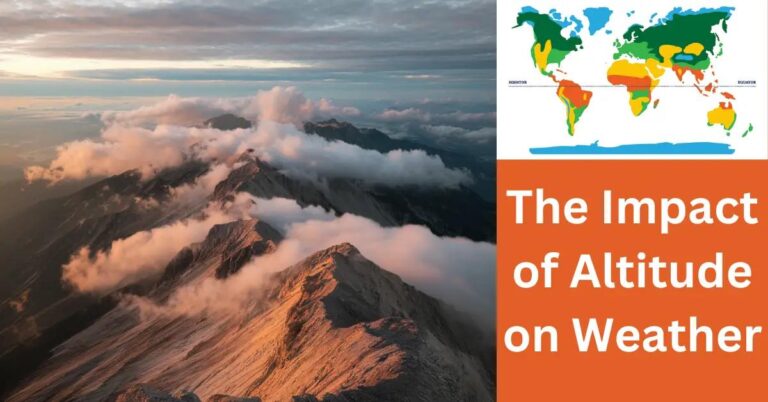TL;DR:
- Meteorology is the science of weather, examining elements like temperature, humidity, and wind.
- Key weather elements: temperature, humidity, precipitation, wind, clouds, light, and atmospheric pressure.
- Pressure affects weather; low pressure can bring storms, high clears skies.
- Technology, like radar and satellites, enhances weather prediction accuracy.
- Weather is subjectively "perfect"; popular spot for good weather: Hawaii.
- Human activities like urbanization and deforestation alter local climates.
- Environmental features like mountains and oceans influence weather.
- Pollution and greenhouse effects contribute to global warming.
- Climate adaptation strategies help communities withstand changing weather.
- Renewable energy and sustainable practices mitigate climate impacts.
- Communities must build resilience and educate about weather risks.
Perfect weather—what a dream for us global nomads! But what truly makes weather "perfect"? As we dive into the fascinating world of meteorology, we'll unravel the principles that create ideal climates. From the role of atmospheric pressure to the impact of human actions, we'll explore how technology and nature shape our skies. Let's discover the science that defines weather and how communities can adapt to its ever-changing patterns. Ready to unpack the secrets of the sky?
What Are the Fundamental Principles Behind Perfect Weather?
What is the science of weather called? It is called meteorology. This science examines weather details like rain and sunlight. Weather can change fast due to complex reasons.
Understanding weather means looking at key elements like temperature and clouds. What are the 7 elements of the weather? They are temperature, humidity, precipitation, wind, clouds, light, and atmospheric pressure. Each element changes other elements. For example, warm air holds more moisture. This interplay defines our weather.
Atmospheric pressure plays a big role. Low pressure brings clouds; high pressure clears skies. Imagine pressure like a balloon. When pressure drops, the balloon lets air out, creating clouds and sometimes storms.
Ideal climate conditions depend on how these elements balance. Too much heat can create deserts, while too much rain can flood lands. Balancing these conditions shapes a region's weather.
Books and studies on perfect weather help us learn more. "The Science of Perfect Weather" book provides detailed insights. This book looks at how weather elements mix for ideal climate conditions. Reading scientific resources sharpens our understanding of meteorology principles.
Perfect weather is subjective. What you find perfect might differ from someone else. Some enjoy sun, while others like rain. The beauty of weather is its diversity. Different patterns make Earth vibrant and full of life.
For anyone curious about how weather works, these core ideas are key. They form the base for broader studies on climate and environmental science. Keep exploring, and you will find weather patterns fascinating and important.
How Does Technology Enhance Our Understanding of Weather Patterns?
What makes a day "perfect" often begins with accurate predictions. Advances in weather forecasting techniques have transformed how we understand the weather. Using tools like computers, meteorologists can now predict weather with greater precision than ever before.
One major player in weather predictions is weather radar technology. A weather radar sends out pulses that bounce off rain and snow. This helps us see where storms are and where they're going. It is a great tool for predicting sudden changes like a quick rain shower or a thunderstorm.
Satellite weather monitoring plays a different yet vital role. Satellites orbit the Earth, taking pictures from high up in space. These images help meteorologists watch large systems like hurricanes. By seeing these systems from above, they can track their movement and intensity. This helps keep us safe by warning us when dangerous weather is coming.
With the rise of the internet, accessing deep science about the weather is now easy. Many researchers and fans can explore this science through digital books and databases. You may ask, "How can I learn more from home?" Well, many tools, like online journals and scientific databases, offer vast collections of weather science. This means you don't need to be a scientist to learn how weather works.
Together, these technologies help us predict weather more accurately and understand the many patterns that shape our skies. When you look outside at a sunny day or hear about a coming storm, remember the wonders of technology making it possible. Whether you are making plans for the weekend or understanding more about the science of weather, technology opens the door to a world of knowledge.
How Do Environmental and Human Factors Influence Weather?
Who has the most perfect weather in the world? Hawaii often boasts the best weather. Sun shines almost daily, with gentle breezes. Yet, perfect weather draws many factors.
Humans change weather patterns through actions. Cities grow, and they affect local climates. We call this effect "urban heat islands." These areas are warmer than rural surroundings. Buildings absorb heat and release it. Fewer trees and open spaces mean less shade and cooling.
Environmental factors shape local weather too. Mountains, oceans, and lakes influence temperatures and rains. A mountain blocks wind, creating rain shadows where little rain falls. Oceans moderate temperatures, bringing cool breezes in summer and warm air in winter.
Pollution harms weather systems. It changes the air and traps heat, known as the greenhouse effect. This process causes global warming. As it happens, polar ice melts, sea levels rise, and storms become stronger. Soot and smog also form clouds, influencing rain patterns.
Deforestation has big impacts on climate. Trees take in carbon dioxide and give out oxygen. Without them, carbon levels rise. Cutting trees affects rain cycles too. Forests attract rain. When they vanish, so does rain, and lands dry up. The absence of trees and loss of shade increases heat, affecting both people and wildlife.
Finding any spot where weather is always perfect is tricky. Weather changes due to nature and human influence. Each region has unique traits and challenges. By understanding these factors, we can learn how to protect and preserve the climate. Communities must adapt to manage changes and impacts on our planet.
How Can Communities Adapt to Changing Weather Patterns?
Is there anywhere with perfect weather? No, perfect weather is subjective and varies by person. Weather patterns change, making it essential for communities to adapt. Let's delve into how communities can tackle this challenge.
Developing effective climate adaptation strategies is key. This involves cities and towns creating plans to control the impact of changing weather. Examples of these strategies include improving infrastructure to withstand extreme conditions, and adopting new farming methods to suit altered rainfall patterns. In doing so, communities not only survive but thrive under new conditions.
Sustainable weather practices can soothe weather impacts. This means using resources carefully and protecting our environment. Communities can plant more trees, which help manage temperatures and reduce flooding. They can promote sustainable transportation too, like biking or electric buses.
Renewable energy plays a crucial role in addressing climate variability. Switching to solar panels or wind turbines decreases reliance on fossil fuels. This shift reduces greenhouse gases, which helps minimize changes in weather patterns. By choosing renewable energy, we move a step closer to a healthier planet.
Building resilient communities is important for withstanding uncertain weather. This involves educating people about weather risks and training them to respond well in emergencies. Communities should also build stronger homes and roads to withstand severe conditions.
Adaptation is about preparing for the future, knowing change is constant. You can explore more about climate adaptation strategies and related topics on Union Of Concerned Scientists, a site dedicated to science-based solutions for creating healthier, safer communities.
By adopting these strategies, we not only prepare but become proactive, ensuring safety and well-being for all.
Conclusion
In our journey through perfect weather, we've unearthed its essential principles and influencing factors. We've explored meteorological basics, the weight of atmospheric pressure, and human and environmental roles. Technology has transformed weather forecasting with radar and satellites. Our impact through activities like pollution and deforestation is undeniable. By adopting wise climate strategies and sustainable energy, we can face changing patterns with resilience. Perfect weather may be elusive, but understanding and adapting grant us the power to thrive amidst any forecast. Embrace these insights to weatherproof your life and community!












